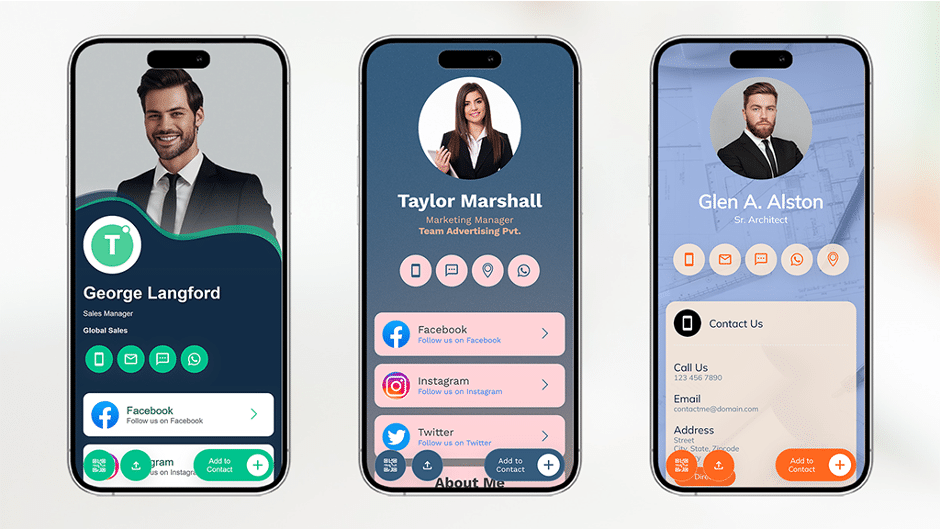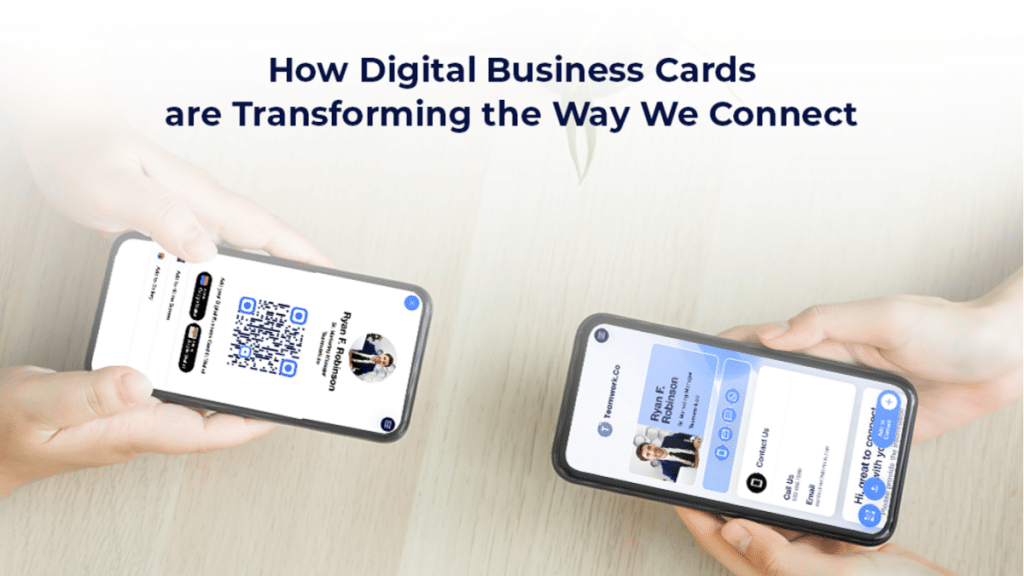Gone are the days when networking meant carrying a stack of paper business cards in your wallet. Today, digital business cards are revolutionizing the way we connect, network, and share information. They’re modern, efficient, and more versatile than their paper counterparts. But how exactly are they transforming connections?
Let’s explore!
What are digital business cards?

Digital business cards are electronic versions of traditional business cards that you can create, customize, and share online. Instead of handing someone a piece of paper, you’re sharing a QR code, link, or file that gives access to your contact details, social media profiles, website, and more. These cards can be stored on a smartphone or accessed online, making them super convenient for modern-day networking.
Why are digital business cards taking over?
Here are some compelling reasons as to why digital business cards are taking over:
Sustainability and eco-friendliness
Paper business cards contribute to waste. Think about it — how many times have you thrown away a card after saving the info in your phone?
Of the 10 billion business cards printed annually, 8 billion are tossed away within a week.
Digital business cards solve this problem. No paper, no ink, no waste. It’s a greener way to network that’s also more aligned with the growing push for sustainability.
Easy updates and real-time changes
With a traditional business card, any change in your title, phone number, or company means reprinting thousands of new cards. Digital business cards can be updated instantly. Once updated, anyone who has your card will see the changes automatically. No reprints. No delays.
More than just contact info
Why limit yourself to a name, job title, and phone number? Digital business cards allow you to add videos, links, portfolio samples, and calls-to-action (CTAs). If you’re a designer, you can showcase your latest work. If you’re a marketer, you can link directly to your campaign’s landing page. The possibilities are endless.
Contactless sharing
Post-pandemic, contactless sharing has become a priority. Nobody wants to swap physical objects at events. Digital business cards can be shared via QR codes, email, text, or NFC taps — all contact-free. This makes them safer and more hygienic, especially at crowded events or conferences.
Impress and stand out
First impressions matter. While paper cards are expected, a digital card says, “I’m ahead of the curve.” When you share a sleek, interactive digital business card, you stand out as someone who’s tech-savvy, forward-thinking, and innovative.
Analytics and tracking
Imagine knowing how many people viewed your card, clicked on your links, or watched your introduction video. Digital business cards can provide these insights, allowing you to see how effective your networking efforts are. Paper cards can’t do that.
How digital business cards improve networking
Networking is all about forming connections and staying top of mind. Digital business cards make this process smoother and more impactful. Here’s how:
Faster follow-ups
No more digging through a pile of cards after an event. Digital cards can automatically sync with your contacts or customer relationship management (CRM) software. This means faster follow-ups with potential clients, partners, or collaborators.
Memorable and modern
Imagine meeting two people at an event. One hands you a paper card. The other shares a sleek, interactive card with links, videos, and a personalized message. Who will you remember? The second person, of course. Digital business cards help you leave a lasting impression.
No storage limits
Your phone’s contacts can store as many names as you want. Paper cards, however, require space in your wallet, desk drawer, or Rolodex. By switching to digital cards, you’re no longer constrained by physical space.
Global reach
Whether you’re attending a local event or connecting with someone on LinkedIn across the globe, you can instantly share your digital business card. Geography is no longer a barrier. Share your card via email, social media, or a simple link — no shipping, no customs, no delays.
Enhanced personalization
You can personalize a digital business card for different audiences. Heading to a marketing conference? Customize your card to highlight your marketing experience. Meeting with potential investors? Showcase your latest projects, pitch decks, or testimonials. This level of personalization can’t be achieved with paper cards.
How to create a digital business card?
Here are simple steps to follow to create a digital business card
Step 1: Choose a good online digital business card generator platform.
Step 2: Select a good template that matches your job profile or business.
Step 3: Add your details such as name, contact number, email id, profile image, etc.
Step 4: Add links to your social media page or links of your past work.
Step 5: Decorate your QR code, set colors, shapes and design.
Step 6: Save the digital business card.
Conclusion
Digital business cards aren’t just a trend — they’re the future. They’re modern, eco-friendly, customizable, and packed with features that make networking more effective. As businesses and professionals continue to prioritize sustainability and technology, digital cards will only become more popular.
If you’re still handing out paper business cards, it’s time to level up. Digital business cards offer a smarter, more modern way to connect and stay memorable. So the next time you’re asked for a business card, don’t hand over a slip of paper — share a QR code and leave a lasting impression.
